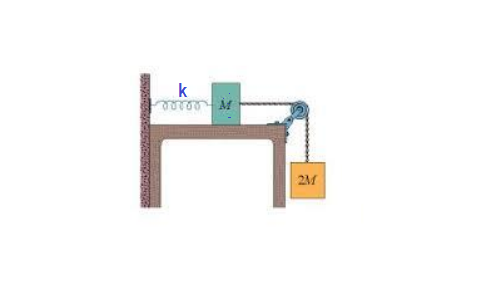Question #5686f
1 Answer

The situation as described in the problem is shown in the figure above. To solve the problem we are to apply conservation of mechanical energy in the given system
- Initially the blocks are at rest with the spring relaxed.and KE and PE of the system are considered zero at this point of reference.
When the hanging block of mass
the hanging block loses its potential energy by the amount
the spring gains Potential energy due to streching by a length
- So the net change in PE of the system at this stage will be
#DeltaU_(sys)=1/2kD^2-2MgD# and this will provide total kinetic energy of two blocks. As the two blocks are combined they will have same velocity#V#
(a)
- Hence total KE of two blocks
#=1/2xx3MV^2=abs(1/2kD^2-2MgD)#
(b)
As the system is attached with a spring the hanging block will momentarily stops and this moment the loss in PE of the hanging block becomes equal in magnitude of gain in PE of the spring due to its stretching and at this moment KE of the system becomes zero.
(c)
- If
#d_(max)# denotes the maximum distance that the hanging block falls before momentarily stopping, then we can write,using law of conservation of energy.
#1/2kd_(max)^2-2Mgd_(max)=0#

